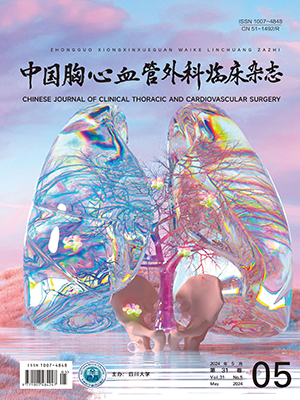| 1. |
Cribier A, Eltchaninoff H, Bash A, et al. Percutaneous transcatheter implantation of an aortic valve prosthesis for calcific aortic stenosis: first human case description. Circulation, 2002, 106(24): 3006-3008.
|
| 2. |
Liu Z, Kidney E, Bem D, et al. Transcatheter aortic valve implantation for aortic stenosis in high surgical risk patients: A systematic review and meta-analysis. PLoS One, 2018, 13(5): e0196877.
|
| 3. |
Elmaraezy A, Ismail A, Abushouk AI, et al. Efficacy and safety of transcatheter aortic valve replacement in aortic stenosis patients at low to moderate surgical risk: a comprehensive meta-analysis. BMC Cardiovasc Disord, 2017, 17(1): 234.
|
| 4. |
Frerker C, Baldus S, Nitschmann S. Transcatheter aortic valve replacement: PARTNER 3 trial and Evolut Low Risk Trial. Internist (Berl) 2019, 60(11): 1221-1224.
|
| 5. |
Thielmann M, Tsagakis K, El Gabry M, et al. Transcatheter aortic valve implantation (TAVI) in patients with aortic regurgitation. Ann Cardiothorac Surg, 2017, 6(5): 558-560.
|
| 6. |
Arias EA, Bhan A, Lim ZY, et al. TAVI for pure native aortic regurgitation: Are we there yet? Interv Cardiol, 2019, 14(1): 26-30.
|
| 7. |
Phan K, Wong S, Phan S, et al. Transcatheter aortic valve implantation (TAVI) in patients with bicuspid aortic valve stenosis—Systematic review and meta-analysis. Heart Lung Circ, 2015, 24(7): 649-659.
|
| 8. |
Das R, Puri R. Transcatheter treatment of bicuspid aortic valve disease: Imaging and interventional considerations. Front Cardiovasc Med, 2018, 5: 91.
|
| 9. |
Ussia GP, Barbanti M, Sarkar K, et al. Transcatheter aortic bioprosthesis dislocation: technical aspects and midterm follow-up. EuroIntervention, 2012, 7(11): 1285-1292.
|
| 10. |
Nishimura RA, Otto CM, Bonow RO, et al. 2017 AHA/ACC focused update of the 2014 AHA/ACC Guideline for the management of patients with valvular heart disease: A report of the American College of Cardiology/American Heart Association Task Force on clinical practice guidelines. J Am Coll Cardiol, 2017, 70(2): 252-289.
|
| 11. |
中华医学会心血管病学分会结构性心脏病学组. 中国经导管主动脉瓣置换术临床路径专家共识. 中国介入心脏病学杂志, 2018, 26(12): 661-668.
|




